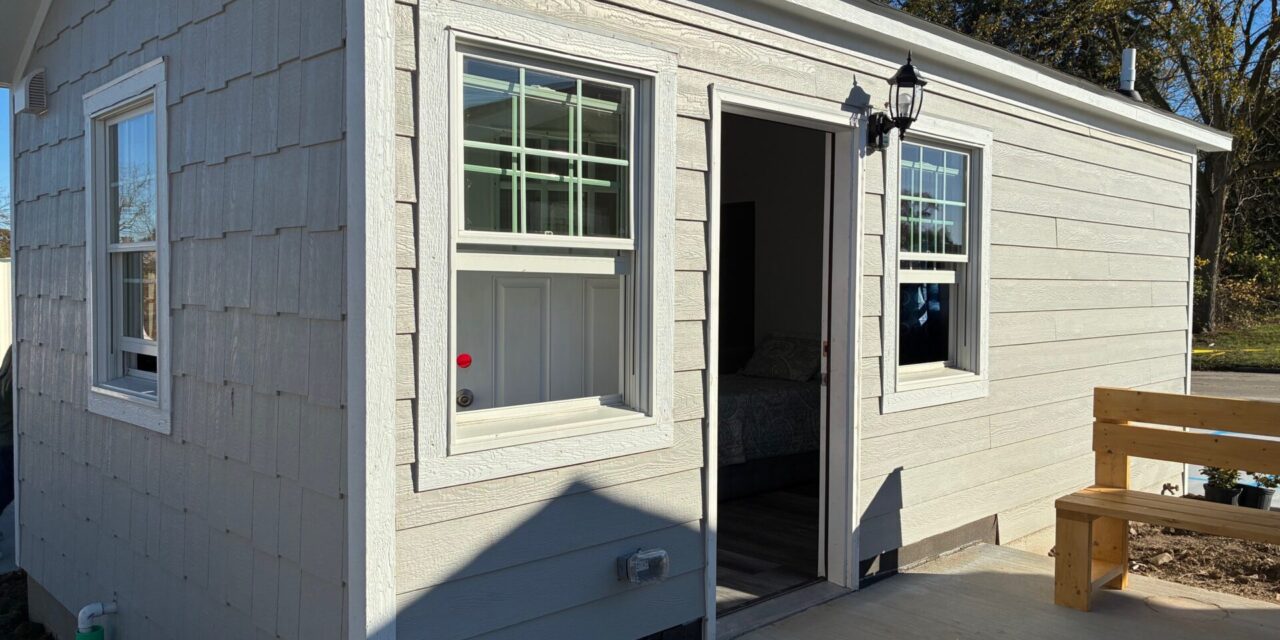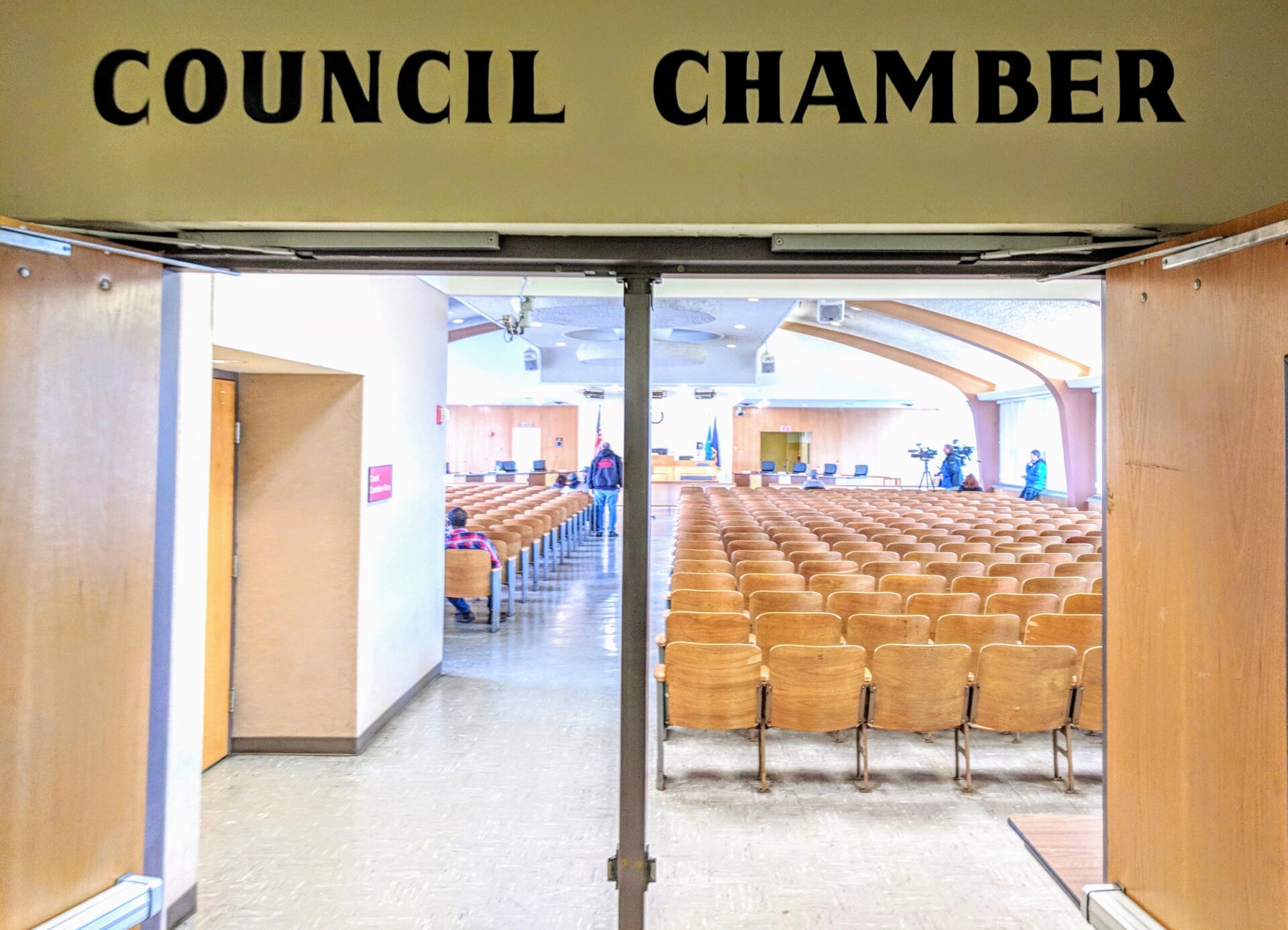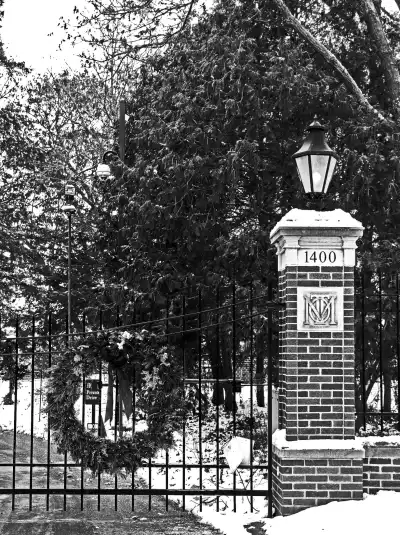By Kate Stockrahm
While Catholic Charities of Shiawassee and Genesee Counties held a ribbon cutting for its much-anticipated Sacred Heart Veteran Village (SHVV) today, CEO Katie Baxter was quick to note that the transitional housing development for veterans experiencing homelessness is not yet complete.
“I will say that we are not as far along with this project as we wanted to be at this time,” Baxter said to the event’s large audience, gathered in the multipurpose room of the development’s Veterans Resource Center on Oct. 20.
“We’ve had lots of different kinds of unforeseen delays,” she continued. “But yet, here we are in this beautiful building that the Lurvey team built for us, and we are gathered as a group of good-willed individuals and organizations that believe that a veteran, after serving our country, should not be homeless.”
In a later interview with East Village Magazine (EVM), Baxter elaborated that those “unforeseen delays” have included emergencies with contractors, zoning and permitting issues, and obtaining the necessary funding for the project’s first phase of development – estimated at around $2.2 million.
“I want to thank you all and let you know that we’re not done here, and we have a lot of work to do,” Baxter said to the assembled guests. “We are about two-thirds into our [phase one] funding goal.”
Earlier timelines from Catholic Charities had suggested that the entire development – which is designed to consist of eight 300-square-foot studio and 18 one-bedroom bungalows – would be completed by summer 2025.
However, even with just four of those units anticipated to be done and occupied between November and December of this year, the mood of the event was largely positive, cheery, and hopeful.
“Right here, we’ve developed a headquarters for healing,” said Daniel Vela, Catholic Charities’ AmeriCorps VISTA member and himself a Purple Heart Marine Corps veteran. “A place where those people that want to help the veterans, and those veterans that need the help, can come together.”
After a host of welcome remarks, guests of the ribbon cutting were invited to walk around the Resource Center, chat with staff, and tour one of the completed studio bungalows next door.
During the tour time, Kevin Nelson, a former Navy Seabee, told EVM the day was certainly special to him as a veteran, but also because he’d been able to support the building effort during one of the most recent “contractor emergencies” Baxter had mentioned.
“We had a handful of guys here over the weekend, I was one of them,” Nelson, who works in construction but helped out as an individual, said.
He and a few other carpenters stepped in to put up siding on two bungalows that were visible from the show unit after a contractor meant to do that work fell through at the last minute.
Nelson explained that while he isn’t from Flint, he’d felt moved to support the SHVV after hearing about the project on the radio during his travel to a different worksite up in Bay City.
“The radio show host in the morning was talking about needing people to come volunteer some time,” he explained. “I wasn’t available, but it was something that stuck in my mind.”
So, when Baxter reached out for help over the weekend, Nelson was glad to respond.
“I’m not a Purple Heart vet, but I’ve been to Iraq. I’ve been to Afghanistan. I’ve been with guys that have gone through the trauma,” he added. “I’ve been with guys that, when we were in, you can tell something’s not right, and those are the guys that get out and they have issues, and those are the people that need this. So it does mean a lot to me to see that there are other people outside of the V.A. that are actually caring enough to do something like this.”
Information provided by Catholic Charities at the ribbon cutting stated that the full SHVV development will cost $5.5 million overall ($2 million more than originally estimated). Both male and female veterans experiencing homelessness will be eligible for the project’s single-occupancy bungalows, and while the “projected length of stay in the transitional housing program is 12 – 18 months” the timeframe could be “longer or shorter based on the veteran’s individualized needs.”
As to when construction might be complete, Baxter did not have a firm answer for EVM. However, she told the audience at the ribbon cutting: “This is God’s project – not our project – and it will be done in His time.”
Editor’s note: Daniel Vela, quoted above, also serves a community journalist for East Village Magazine. He did not take part in the reporting or writing of this story.







